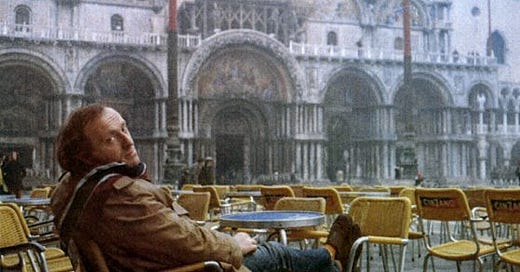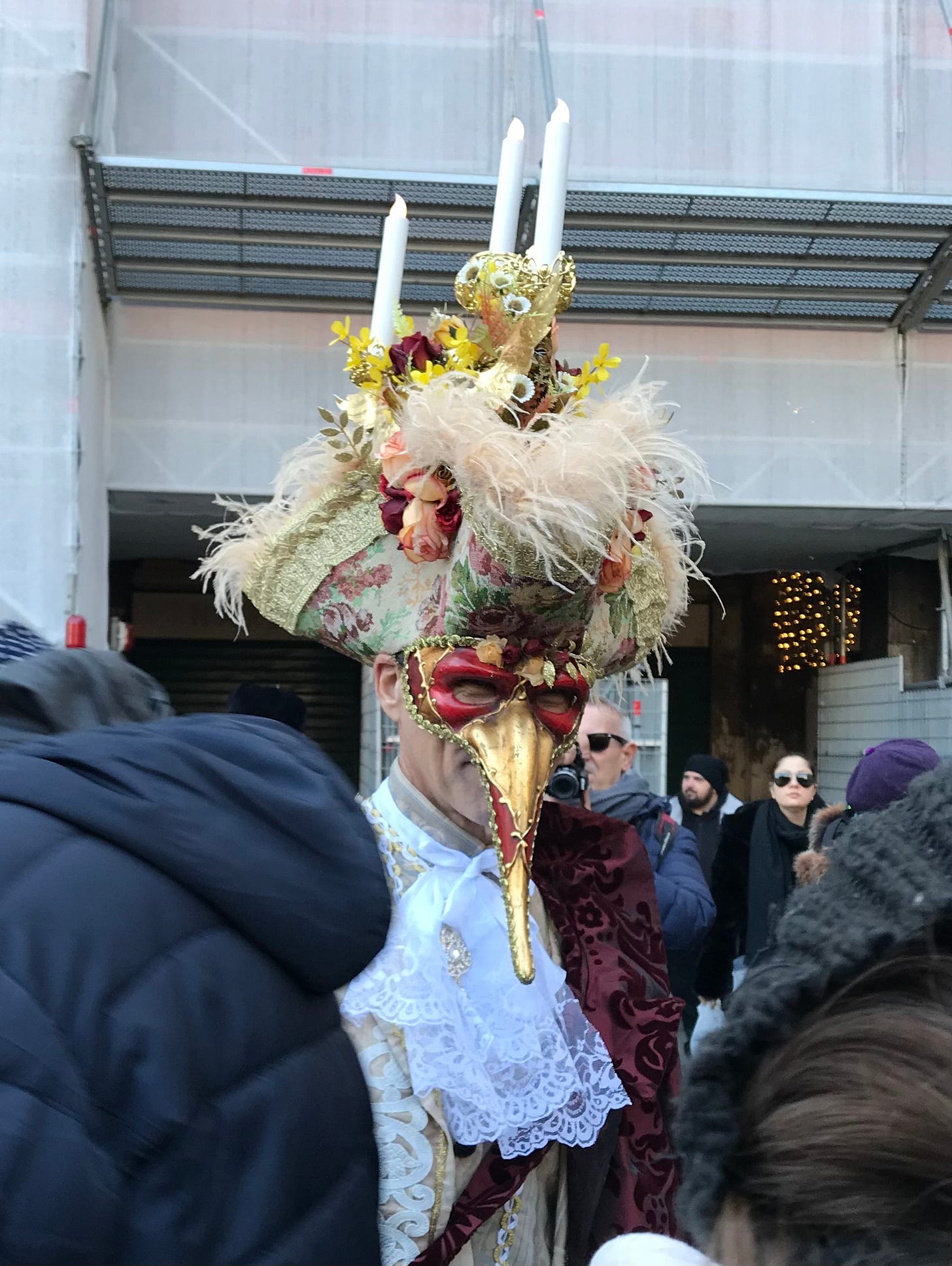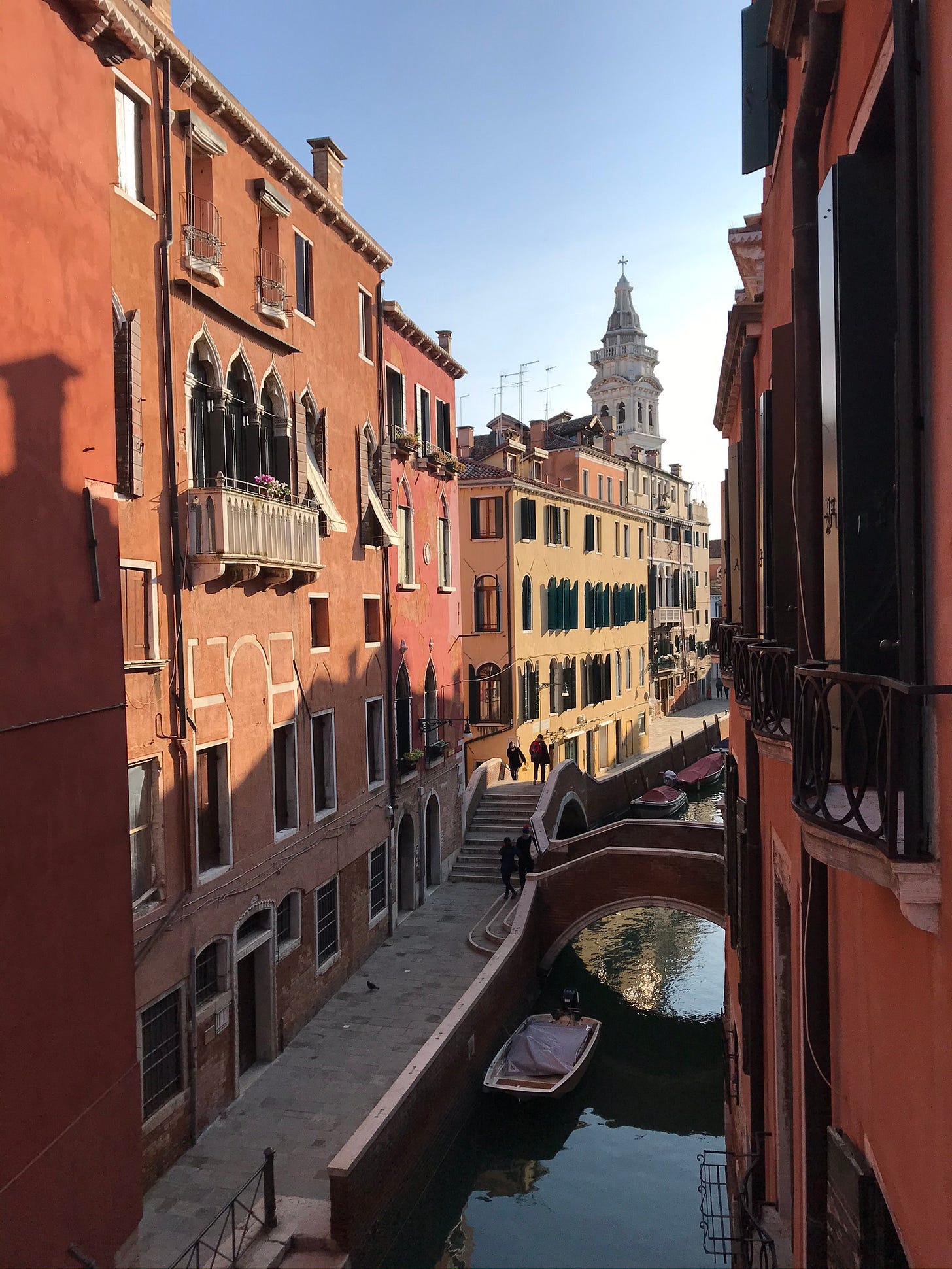“I would never come here in summer, not even at gunpoint,” Joseph Brodsky wrote in “Watermark,” his love letter to Venice.
In 2010, I read THIS essay by Rachel Donadio for the New York Times, and I kept it filed away in my brain for years while I toiled away at work, as we do, hoping for a time when life was not so demanding that I might be free enough to waste days in wintery Venice. I wanted to experience it when when it was, according to Brodsky, a city “part damp oxygen, part coffee and prayers.”
Donadio’s essay described the Venice that Joseph Brodsky was set against:
“In summer, Venice is torrid, stuffed to the gills with the 18 million tourists who overwhelm it each year, clogging its bridges, swelling its vaporetti, vastly outnumbering the famously grouchy residents and making the city seem like one big floating Disneyland, a perverse metaphor for the future of Italy, if not all of Europe, a place that has staked its future on selling an image of its past and may yet be destroying itself in the process. The Russian-born poet longed for cold. In a series of rented apartments over a series of Januaries toward the end of his too-short life, he came, froze, and wrote.”
Donadio’s piece was so descriptively rich that it became hard to think of Venice in any other way. I had been once before, in summer, and it was actually good. My husband and I were still travel novices. We picked a sweet but unfancy pensione on a small canal. We were lucky it had a little dock. We remember our last night vividly. As we made arrangements to settle the bill ahead of the next day’s very early departure, I mentioned to the clerk the items we had consumed from the mini-fridge so we could add it to our charges. “Ah, no. Madam, in the mini bar… everything is free.” The look I gave my husband. Not more than 15 mins later we were at the little canal-side dock with all the bottles of mini-prosecco, toasting the last day of the trip as the summer sunset over Venice.
Around 2017, I quit my job and, after revisiting Donadio’s essay, made a series of winter trips to Venice. On each of four trips the weather was amazing. Foggy in both morning and night. Cold but clear in the daytime. Often sunny. No high water. On one February trip, Carnivale had begun two days before my departure. That was just about right. I don’t much like the corniness of a big festival like that. I certainly wouldn’t want a week of it. But I did enjoy seeing St. Mark’s absolutely packed with people just once. Among the many half-hearted costumes, I saw a guy who really went for it, chandelier head and all.
Venice in winter is a bargain. Hotels are hungry for visitors and deals can be had. But Venice is a place where, generally, you cannot ask too much of the hotels. Most are small and the decor is a little tired. Or the decor is new but trying to be “old Venetian,” which lends a “Rococo HomeGoods” vibe to the whole scene, which is embarrassing for everyone involved. For this reason, on three separate trips I have been happy to rent an apartment in THIS building near Campo San Lio, an easy five-minute walk to the Rialto bridge and vaporetti stops. The apartment was decidedly unfancy, but had an honest feeling. The building itself was handsome enough. The big living room made it feel like you were staying in some old uncle’s Venice apartment: a house-rich/cash-poor kind of place. Faded elegance. The view is charming. Stick your head out and you can look down onto a tiny canal and the richly-colored neighboring buildings. On one trip I watched a 20-something guy moving in or out of his place, putting boxes and a mattress on a small boat. In Venice, just living a regular life seems to require a level of effort that disqualifies most of us.
That apartment’s location is down an alley that offers a lot of quiet and privacy, despite it being so close to busy pedestrian street full of shops. If you take a quick walk the other direction, you are perfectly located near Campo Santa Maria Formosa, a square that seems both lively and out of the way at the same time. It’s also very close to Fondazione Querini Stampalia, a museum and cultural institution with an important architectural intervention by modernist Carlo Scarpa. This update to the building, “is developed around four articulated themes linked to Venetian tradition: The bridge, the lightest held in the city; the water entering into the building; the Portego, traditional space in Venetian palaces, and the Garden.”





